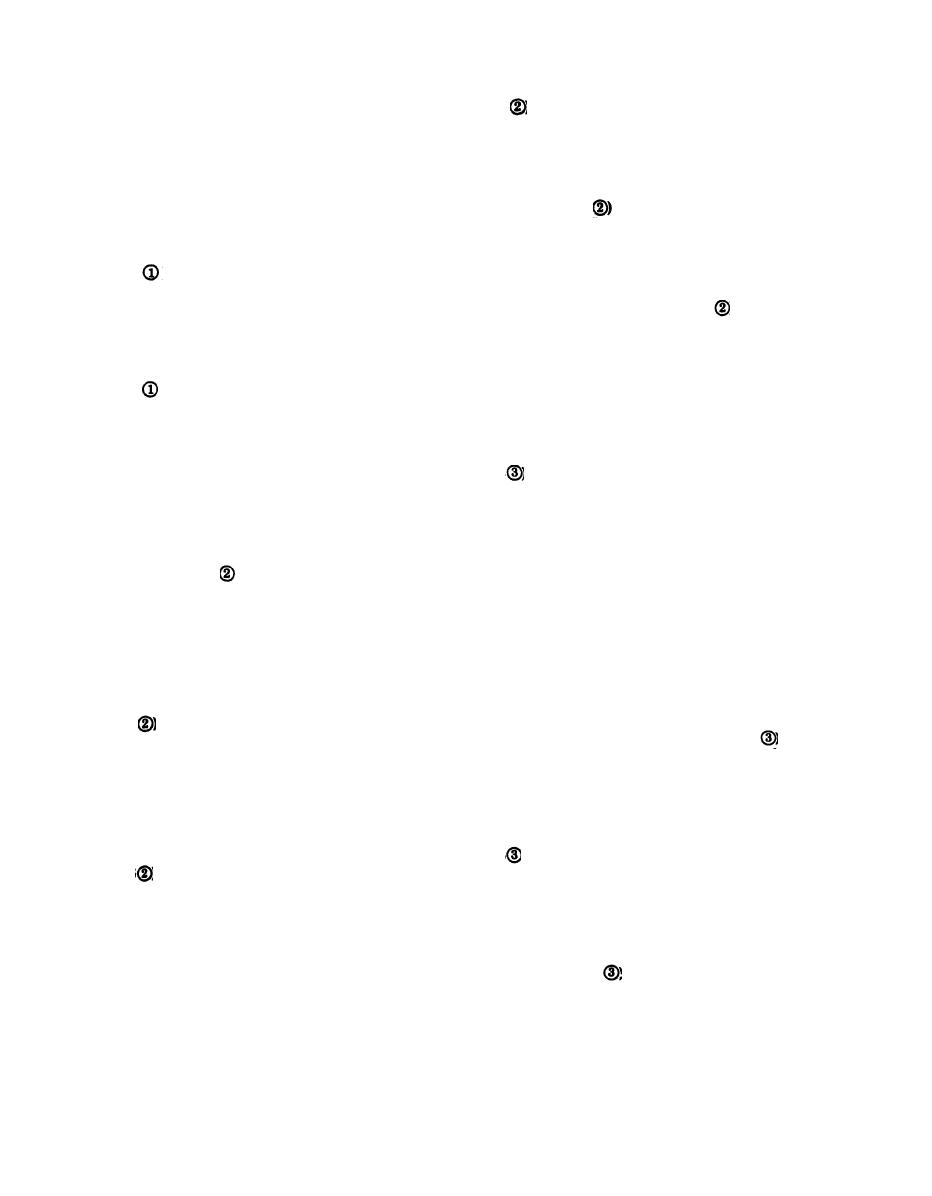 |
|||
|
|
|||
|
Page Title:
Four-Wire VF User with Integral Signalling |
|
||
| ||||||||||
|
|
 TM 11-5895-1012-10
echoes arising from four-wire to two-wire conversions.
2-8 ). The users of this circuit can be either a four-
The circuit makes an appearance at the Primary Patch
wire switchboard or individual user which uses loop
Bay by way of outside plant cables. Between the Pri-
signalling. The circuit flow is the same as in h above
mary and Equal Level Bays, conditioning is provided
except that an E&M/DC loop converter is used instead
by pads, amplifiers, and two-wire/four-wire terminat-
of an E&M/20 Hertz converter.
ing sets. Signalling conversion is provided by E&M/20
j. Four-Wire Data User Cable to TCF Without Sig-
Hertz converters and 2600 Hertz signalling unit. This
nalling (fig. 2-8
This circuit is for high speed
configuration can apply to "hotline" or dedicated cir-
data users, AUTODIN interswitch trunks, and data
cuits, orderwires, and switchboard trunk circuits.
lines for secure voice circuits. In addition to level ad-
d. Two-Wire Voice User With Loop Signalling (fig.
justment, amplitude or delay equalization units may
2-8
). The users for this circuit a either two-wire
be required in the strings of conditioning equipment.
switchboards or two-wire individual users which use
k. Two-Wire or Four-Wire Voice User Using Non-
loop signalling. The circuit is the same as that in c
Standard Inband Signalling (fig. 2-8
). After enter-
above with the exception of using E&M/dial loop sig-
ing the TCF by way of the Primary Patch Bay, the
nalling converters instead of E&M/20 Hertz convert
non-standard inband signalling is converted to stand-
ers.
ard inband signalling before it appears at the Equal
e. Two-Wire Voice User with E&M Signalling (fig.
Level Bay. This is accomplished by using a signalling
2-8 ). The user for this circuit is either a two-wire
unit compatible to the non-standard inband signal be-
mitchboard or individual user with E&M signalling. It
ing received, converting it to E&M signalling, and ap-
is noted in this circuit that a separate cable is used
plying the E&M pulses to the SF 2600 unit through a
in the on-base cable to carry the E&M (dc) lea& from
pulse link repeater.
the user location through the Primary Patch Bay to
l. Four- Wire PBX or User with DX Signalling (fig.
2-8 ). The users for this circuit are either au
the SF 2600 unit. Conditioning items are two
wire/four-wire terminating set, repeat coil, echo sup
AUTOVON PBX access line or an AUTOVON four-
pressor, and pads and amplifiers for level adjustment.
wire user. DX-1 signal units and repeat coils are used
These configurations have applications as user to cen-
at the user locations either to conserve cable pairs or
tral officer inter-connections and user-to-user link.
where loop resistance exceeds 50 ohms. If the AUTO-
f. Two-wire Voice User with Standard Integral Sig-
VON switch is off base, the circuit proceeds to the
nalling (fig. 2-8
). The user of this circuit is a two=
Equal Level Bay with the necessary conditioning and
wire w who has 2600 Hertz inband signal incorpo-
telephone signal conversion units located between the
Primary and Equal Level Patch Bay appearances. If
rated into the terminal telephone equipment. A two
wire/four-wire terminating set performs the necessary
the AUTOVON switch is collocated on-base, the cir-
cuits do not access the Equal Level Patch Bay, but
hybrid functions, and pads and amplifiers are installed
after passing the Primary Patch Bay, the circuits are
for level adjustment. This circuit is for special applica-
tion to users with this requirement and may have an
conditioned for proper levels and E&M signalling, and
make another appearance at the Primary Patch Bay
echo suppressor added if so specified.
and connect to the AUTOVON switch.
g. Four-Wire VF User with Integral Signalling (fig.
m. Four- Wire PBX or User with E&M Signalling
2-8 ). This user provides his own 2600 Hertz in-
to AUTOVON (PBX Cable to TCF) (fig. 2-8
). This
band signalling at the user station or the circuit may
user circuit is similar to the circuit described in l above
be a data circuit. In any cam, no signalling conversion
except there is no requirement for DX-1 signal units
is required at the Technical Control Facility. Between
at the user or the TCF. This is because the user and
the Primary and Equal Level Bay appearances, repeat
TCF are closely located and plant cable pairs with less
coils, pads, and amplifiers are supplied for conditioning
than 50 ohms loop resistance can be used.
and level adjustment Amplitude equalizers may be re-
n. Four-Wire Data User With DX Signalling (fig.
quired depending on the service.
2-8 ). This circuit is similar to makeup to that dis-
h. Four-Wire VF User with 20 Hertz Signalling (fig.
cussed in l above, with necessary amplitude or delay
2-8 ). The users for this circuit are either a four-
equalization devices. The circuit is of high speed data
wire switchboard or an individual four-wire user which
quality but can be called up by way of the AUTOVON
uses 20 Hertz signalling. A four-wire physical circuit is
switch when required.
used for the on-base cabling. Conditioning between the
o. Two-Wire PBX Cable Access Line to Local
Primary and Equal Level Bays consists of pads and
AUTOVON Switch (Two to Four-Wire Conversion at
amplifiers for level adjustment. E&M/20 Hertz con-
the PBX) (fig. 2-8 ). This circuit involves connec-
verters and SF 2600 units are required for telephone
tion of a two-wire on-base telephone switchboard to an
signalling conversions. This configuration can be ap-
AUTOVON switch which is also located on the same
plied to dedicated lines, and orderwire circuits.
base. This PBX (access circuit appears only on the Pri-
i. Four-Wire VF User with Loop Signalling (fig.
2-19
|
|
Privacy Statement - Press Release - Copyright Information. - Contact Us |